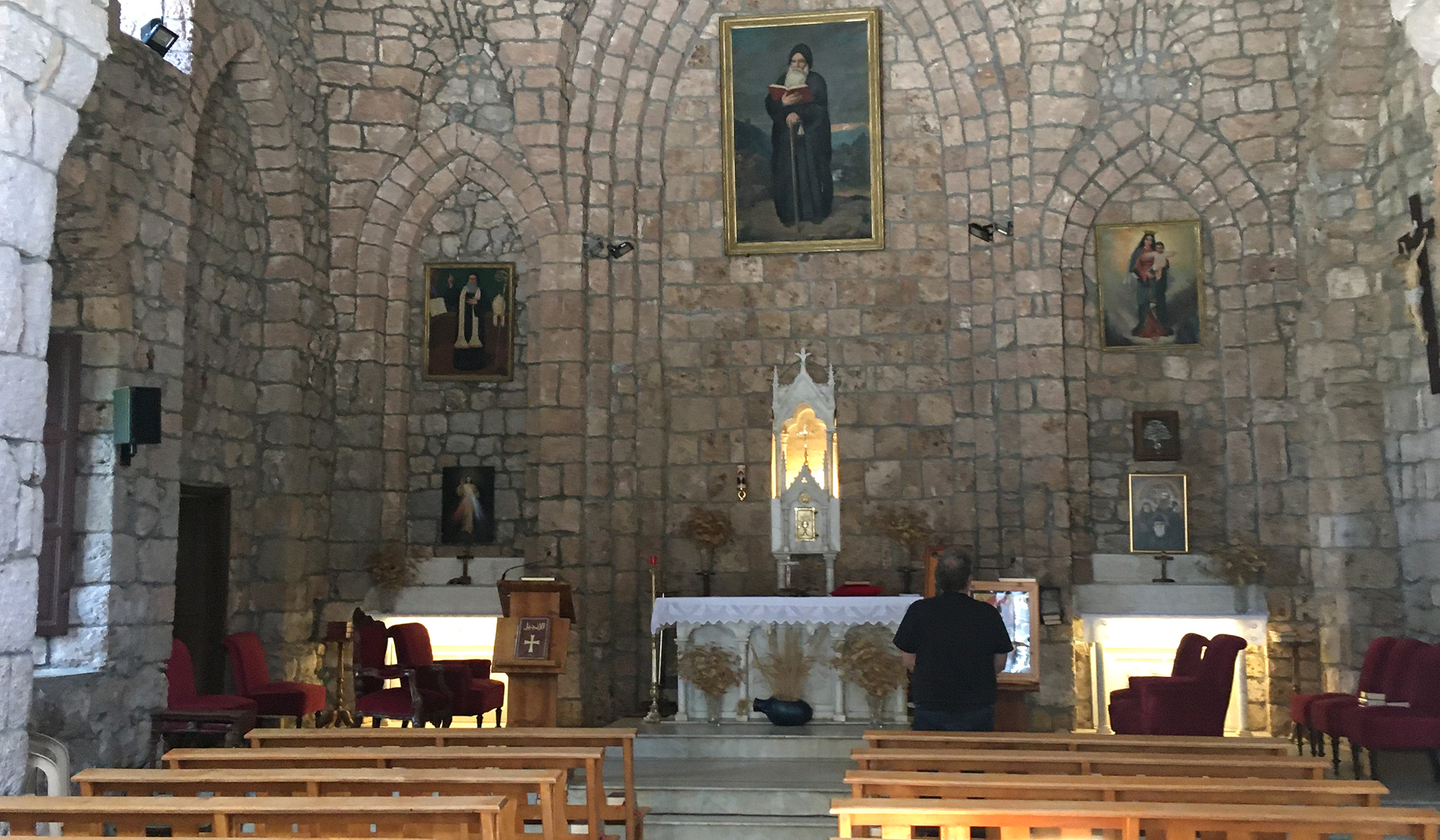With a new and familiar monk
Even after two hours of driving up Mount Lebanon, a range that spans over a hundred miles along the Levantine coast, you never quite feel that you’ve arrived; there are, somehow, always more mountains. With the Mediterranean at our backs, a Lebanese friend and I travel eastward and upward, by twisting roads that intersect with pathways ancient and new — even the Via Appia, from which all roads led and by which they returned to Rome. We drive to meet a monk.
Seventeen centuries earlier Abraham, a monk, made this same ascent on foot at the behest of Saint Maron (for whom the Maronites are named), to convert the recalcitrant and sometimes violent Phoenician pagans of Mount Lebanon. The mountain was sacred to the Phoenicians, and there they clung to ancient rites to appease terrifying deities. Brother Abraham succeeded in his mission, despite much hardship. The caves that for millennia were the scenes of macabre sacrifices by torchlight became the site of a new ritual, one that reenacted a single blood sacrifice in Jerusalem three centuries before.
God offered himself in place of men, Abraham taught them, and that sacrifice was sufficient. And so the stubborn pagans of the mountain became stubborn Christians; the River Adonis became the River Abraham, or Nahr Ibrahim. Into the holy valleys of the mountain went the followers of Maron, and there they chiseled monasteries and catacombs into Mount Lebanon. The people followed them and built homes and villages to be near these spiritual centers. On every windswept peak and precipice they erected a crucifix or statue of Mary that could be seen for miles. There they survived conquest and persecution by Persians, Turks, Mamelukes, and other invaders, who in every century seem to occupy the low-lying coastal city-states below — but never Mount Lebanon.

